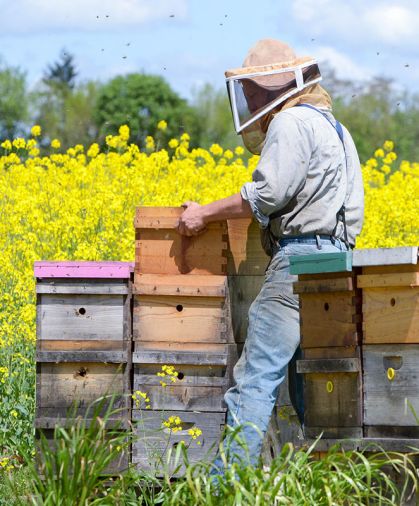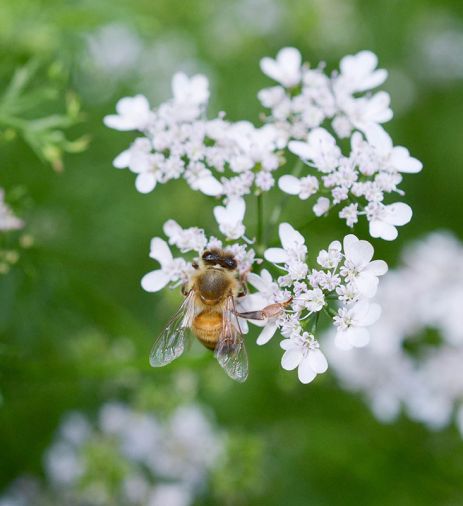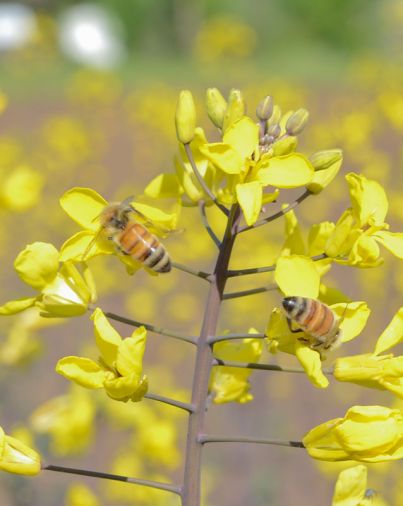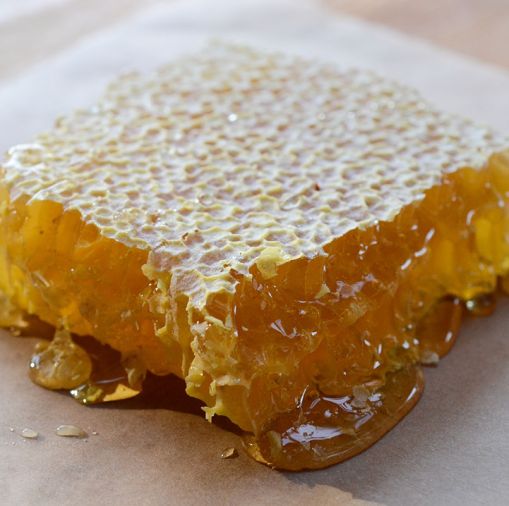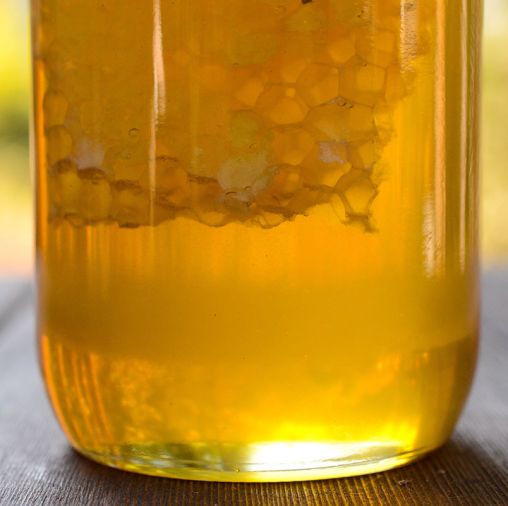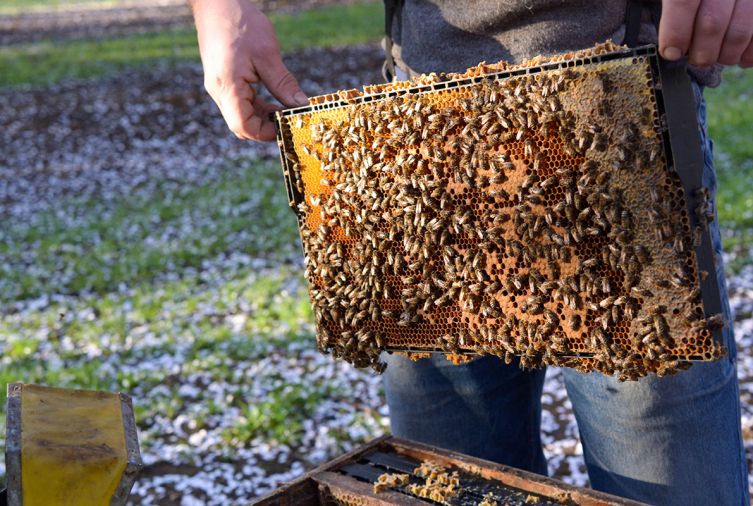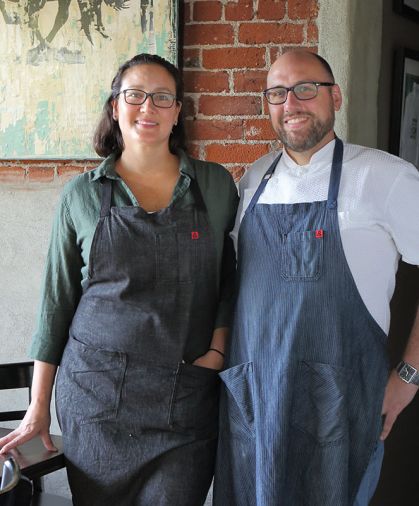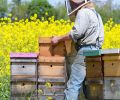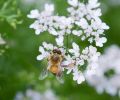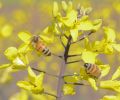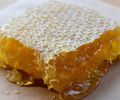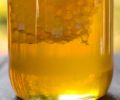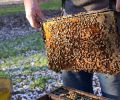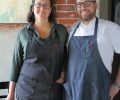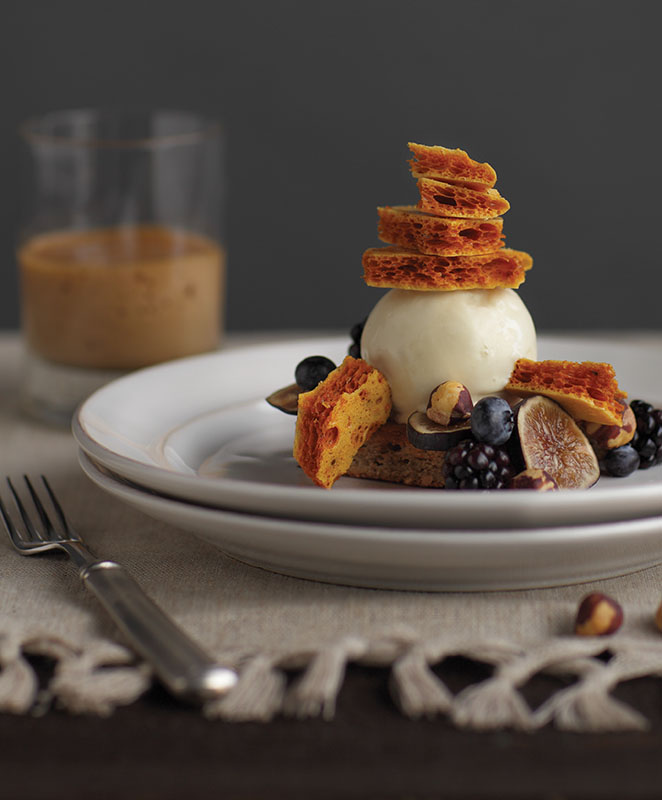When spring blossoms burst on the scene, the riot of colors arrives with every gardener’s best friend: bees. Oregon is home to nearly 800 species of bees and these buzzy pollinators play a vital role for agricultural crops, wild plants, and flowers across the state. But with increased habitat loss, climate change, and other environmental factors, the plight of bees has led to a rising interest in how to garden for these fascinating insects and other ways to support them.
“We teach people how to create a native landscape and food forest in their yard so they can attract a variety of pollinators,” says Matt Getsinger. He and his wife Rachel found their way to beekeeping in 2012. What started out as a hobby to enhance their own pollinator garden with native flora and fauna turned into a thriving family business called Oregon Bee Keeper.
“Working with honeybees is a great way to get people excited about other native pollinators and plants,” says Getsinger. The husband-and-wife team offers full-service apiary management, maintenance, and education. “In a sense, we are intermediaries between farmers and hobbyists,” adds Getsinger.
They first expanded into bee consulting with their immediate neighbors—which includes several vineyards throughout Yamhill County. “We now work with over 100 beehives, still mostly in wine country and on farms,” says Getsinger. “But as more people join the movement, we are in backyards and gardens too.” They also work to educate on the vital role of protecting pollinators to create a thriving ecosystem. Over the past decade, he’s found people want to host bees for multiple reasons, most often to pollinate their plants and to help save bees (and every hive makes a difference).
Of course, there’s also the allure of honey. “We’re just crazy for different single-origin species of honey,” says Getsinger. Which all starts with what the bees forage and eat. “We harvest honey at different times of the year to keep the honey sources unique,” says Getsinger. Early in the year, he sources honey from flowering trees like maple and crab apple. At the peak of summer, it’s all about blackberries.
One of his favorite honeys is from vetch, a native weed with beautiful purple flowers that’s commonly used as a cover crop. “It tastes like vanilla and marshmallows,” he says. “That’s another beautiful thing about single source honey, you really get to know the plants in your area through taste.”
Experience Oregon Honey and Buzzworthy Beekeeping Classes
Get a sweet taste of place at the Honey Porch (603 N. Meridian St, Newberg), similar to a self-serve farmstand, this is where Getsinger sells his raw, unfiltered, local honey. In Salem, you can experience one of the state’s few tasting rooms for honey at Flying Bee Ranch, where Jeremy Mitchell and his team offer more than a dozen local honey varieties, along with other products from the hive including bee pollen and honeycomb.
To learn more about beekeeping, check out classes offered by organizations around the state from Portland Metro Beekeepers to the Central Oregon Beekeeping Association. For a deep dive, there’s Oregon State University’s Master Beekeeper Program, where they offer practice in the field and certificates at three successive levels: Apprentice, Journey, and Master. Many local nurseries also offer seasonal workshops on creating pollinator-friendly gardens with native plants.
Explore Oregon’s Bee Friendly Wine Trail
During peak spring and summer months, pair wine tasting with bee-focused events at vineyards across the Willamette Valley. For over a decade, many wine growers have been adding pollinator-friendly plants (clovers, peas and vetches) into their landscape to build biodiversity and create native bee habitats.
In partnership with Oregon State University, this pioneering group of wineries established a bee-friendly wine trail and many activities launch for the first time this summer. Participating wineries include Willamette Valley Vineyards, Domaine Willamette, Stoller Family Estate, Left Coast Estate, Winter’s Hill Estate, Youngberg Hill & Winery, Fairsing Vineyard, Abbey Road Farm and Soter Vineyards. For more information about the tour, visit www.oregonbeeproject.org/winetour.
RECIPE
Hazelnut Brown Butter Torte with Honey-Chamomile Cream and “Honeycomb” Candy
recipe by chefs Gabrielle Quiñónez Denton and Greg Denton, from OX Restaurant, oxpdx.com
Serves 8
Ingredients: Hazelnut-Brown Butter Torte
1 ¼ cups roasted hazelnuts
1 1/3 cups powdered sugar
1 cup + 1 tbsp unsalted butter
½ vanilla bean, seeds scraped
5 large egg whites
1/3 cups almond flour
3 tbsp granulated sugar
1 tsp kosher salt
extra-virgin olive oil, for serving
seasonal berries or figs (optional)
Preparation: Hazelnut-Brown Butter Torte
Preheat the oven to 350º. In a food processor, add the nuts and powdered sugar; process until finely ground.
To brown the butter, place the butter in a small pot over medium heat. Cut open the vanilla bean pod and scrape the seeds in and add the remaining pod to the butter and swirl until butter is melted. Turn heat down to low.
Cook the butter until the milk solids have turned toasty and golden brown, about ten minutes. TIP: The butter will foam up as it gets close, and it will be difficult to see how browned the milk solids have gotten. When the butter starts to smell nutty, remove it from the heat just long enough for the foaming to subside and you can see into the bottom of the pot. When the butter smells nutty and is a deep golden brown, remove from the heat. Cool for about ten minutes before incorporating into the other ingredients. Remove the vanilla pod and discard.
In a large bowl, whisk the egg whites until stiff peaks form. Working in three batches, alternate adding the rest of the dry ingredients and brown butter into the egg whites.
Brush the bottom of a 10” round spring-form cake pan (or a 10” square cake pan) with one tablespoon of the vanilla brown butter. Pour in the batter.
Bake until a toothpick poked into the center of the cake comes out clean, 45 to 60 minutes. Remove then let cool on a baking rack for 30 minutes before releasing from the pan.
Yields approx. 5 cups
Ingredients: Honey-Chamomile Ice Cream
1 ½ cups heavy cream
1 cup milk
¼ cup honey
1/3 cup dried chamomile flowers
6 large egg yolks
3 tbsp granulated sugar
¼ tsp kosher salt
Preparation: Honey-Chamomile Ice Cream
In a medium pot, add the cream, milk and honey; bring to a simmer over medium heat, then remove from the heat. Add the chamomile flowers and let steep ten minutes; strain.
In a medium bowl, add the yolks, sugar and salt; whisk to combine. Slowly pour the cream mixture into the yolk mixture, whisking constantly.
Transfer the ice cream base to a heavy-bottomed, stainless steel pot and cook over low heat, stirring constantly with a heatproof rubber spatula. As soon as it thickens (and before the eggs scramble), strain through a fine-mesh strainer. Chill to cool completely before transferring to an ice cream machine; spin according to the manufacturer’s directions.
Serves 8-10
“Honeycomb” Candy
vegetable oil, for greasing the pan
1 ½ cups granulated sugar
¼ cup honey
¼ cup water
1 tbsp baking soda
Preparation: “Honeycomb” Candy
Rub or spray a baking sheet or silicone baking mat with vegetable oil.
In a large, heavy-bottomed, stainless steel pot, add the sugar, honey and ¼ cup water; heat over medium-high until the mixture registers 300º on a candy thermometer.
Immediately remove from the heat and whisk in the baking soda, then quickly pour the mixture onto the prepared sheet pan, but do not smash it down or you will lose the air pockets that make this candy light and crispy.
Let cool to room temperature for about fifteen minutes, then break off shards of the candy, crumbling some and leaving others in larger pieces.
Assembly
Serve the cake slightly warm, add a scoop of honey-chamomile ice cream and crumbled honeycomb candy. Garnish with a drizzle of extra virgin olive oil and some seasonal fruit and figs, if you like.
Wine Pairing
Eola Hills 2015 Vin d’ Epice Late Harvest Gewürztraminer

